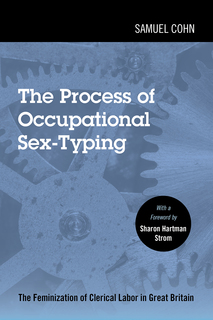The Process of Occupational Sex-Typing
The Feminization of Clerical Labor in Great Britain
With a Foreword by Sharon Hartman Strom
Samuel Cohn’s critical study of two Victorian British firms represents a radically new examination of women’s work. By contrasting the Post Office, which was the first employer to use female clerks instead of males, and the Great Western Railway, one of the last employers to make this change, Cohn identifies the organizational and economic limits to female employment.
The Process of Occupational Sex-Typing challenges traditional accounts of clerical feminization that invoke cultural restrictions on women’s work, human capital theory, discrimination by co-workers, and the de-skilling of jobs. Further, Cohn puts forward an alternative theory of occupational sex-typing that emphasizes the high cost of male labor, differences between organizations in their ability to tolerate discrimination, the latent contradictions within internal labor markets, and competition to women from other sources of cheap labor.
By examining the differences between the firms and the differences between male and female offices within each firm, The Process of Occupational Sex-Typing combines the intellectual rigor that comes from social science methodology with the attention to historical detail that comes from archival research, to produce a major new theoretical contribution to the study of women’s economic status.
Table of Contents
Metadata
- isbn9781439917541
- publisherTemple University Press
- publisher placePhiladelphia, PA
- restrictionsCC-BY-NC-ND
- rightsCopyright © 1985 by Temple University—Of The Commonwealth System of Higher Education
First published 1985. Reissued 2018.


